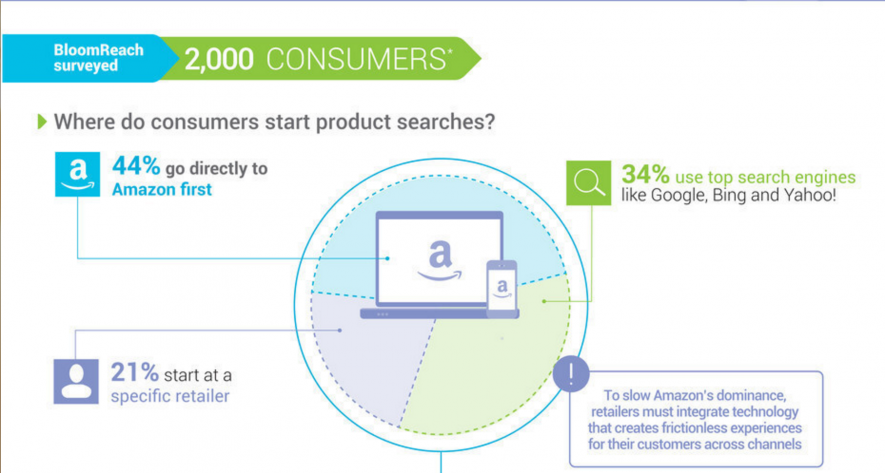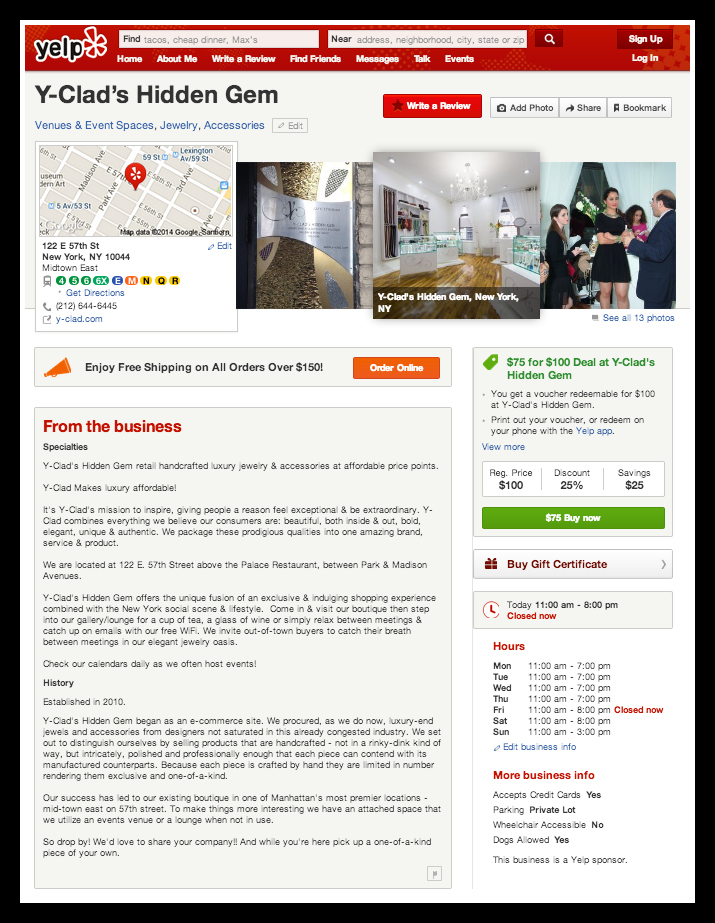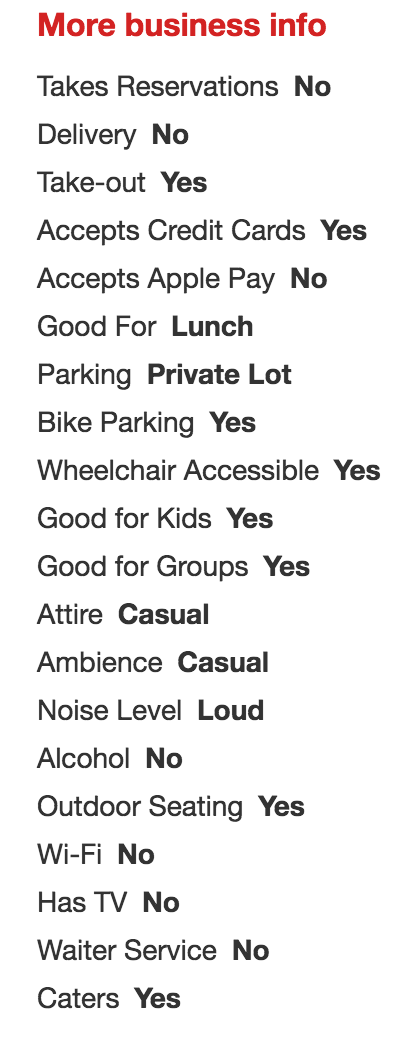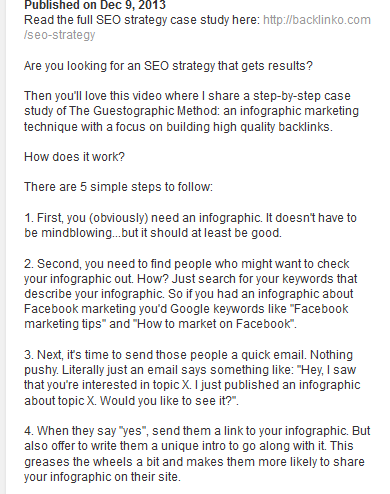Justin McKinney Vertical Search Engines: What Marketers Need to Know in 2016 Justin McKinney 94 26 1 7 94 26 1 7
Google is still the king of search and, despite numerous claims to the contrary, SEO is alive and well. However, the nature of search has changed dramatically in recent years and for most businesses, optimizing just around Google isn’t enough to stay competitive.
One of the most significant developments online in the last few years is the rising popularity of vertical search engines.
This blog post will cover 3 of the biggest vertical search engines that are relevant for the majority of businesses – Amazon, Yelp, and YouTube. Before we begin, let’s make sure we’re all on the same page when it comes to defining exactly what vertical search is.
What are vertical search engines?
Vertical search engines help users find content about a specific topic, industry, or business vertical (hence the term ‘vertical search’). The content in question depends largely on the search engine you’re using; an e-commerce engine would help people find products, a video search engine would help people find videos, and so forth.
If you’ve spent any amount of time online, you have almost certainly used a vertical search engine before. Here are some of the biggest players:
- Amazon (e-commerce)
- Yelp (reviews)
- YouTube (videos)
- eBay (ecommerce)
- Pinterest (images)
- Kayak (travel)
- TripAdvisor (travel)
- Indeed (jobs)
- Etsy (e-commerce)
To be clear, I’m certainly not making the argument that every business needs to have a well-optimized presence in each of these search engines. However, nearly every business can benefit from optimizing for some sort of vertical search.
In the U.S, more and more people are spending time on vertical search engines and their mobile apps; according to comScore, in 2015 47% of total digital media engagement was in apps, and in their 2013 report they found that vertical search growth was outpacing core search growth (Google searches declined 2% YoY whereas vertical search grew 8% YoY).
 source: comScore 2016 US Cross-Platform Future in Focus
source: comScore 2016 US Cross-Platform Future in Focus
Now that you know what vertical search is, let’s talk about some search engine optimization strategies for three of the biggest vertical search platforms.
Amazon SEO Strategies
Amazon is the largest ecommerce website in the world, which allows businesses and individuals to sell pretty much any product imaginable on it. When it comes to ecommerce, if your product is not on Amazon you are missing a huge opportunity; a new study from BloomReach shows that 55% of Americans will start their search for a product on Amazon, whereas only 28% start on the major search engines (like Google).
This is a significant increase from the year before, when BloomReach found that 44% of Americans start on Amazon and 34% on core search engines.
 source: https://photos.prnewswire.com/prnfull/20151006/274273-INFO
source: https://photos.prnewswire.com/prnfull/20151006/274273-INFO
So the question is, how can my product show up higher in Amazon search? Here are the 5 most important optimization techniques to know in 2016.
1) Maximize your conversion rate
A product’s conversion rate is the number 1 ranking factor on Amazon, and it makes sense; Amazon wants to display its best-selling products more prominently. There are multiple ways to improve conversion rates, but the 2 most important are competitive pricing and free shipping. When it comes to pricing, an effective strategy is to initially offer your product at a lower initial price to boost your conversion rate, and then once you have secured a top spot in search results, slowly raise your price back to a more profitable level. As for shipping, if you can offer free shipping, do it; studies have shown 80% of people are more likely to buy something online if it ships for free.
2) Acquire a lot of positive, verified reviews
People trust online reviews, and more people than ever are checking them out when deciding whether or not to buy. Encourage customers that bought your product to leave reviews by sending them follow-up emails, and when you do receive a negative review, respond to it in an understanding and professional manner. If handled correctly, a negative review doesn’t have to stay that way.
3) Be on Amazon Prime
Amazon Prime members (people who pay a yearly fee on the site for a variety of benefits) outspend non-Prime members on Amazon, are more likely to purchase on Amazon, and more likely to start their product search on Amazon. Therefore, it is in your best interest to have your products be fulfilled by Amazon, as Prime members will then receive free 2 day shipping for your product and your product will display higher in search results. You can learn more about Amazon fulfillment here.
4) Make sure your product is in the right category
This may seem obvious but think carefully about what categories you want your product to show up under. For example, if you are selling wearable technology, you definitely want to show up under Electronics, but you might also want to show up under Sports & Fitness, or Health & Household. If you aren’t under all 3 of these categories, someone looking for a wristband that tracks their heart rate in the Sports & Fitness category won’t see your product at all.
5) Do your keyword research and optimize your product pages with keywords in mind
Just like Google SEO, keyword research is important for Amazon. Use keyword research tools like SEMrush to get an idea of the phraseology people are using, choose the best keywords that are a natural fit for your product, and include them on your product page. The most important on-page elements are the page title and the product description. And speaking of product descriptions, write unique and compelling ones; the manufacturer description often exists on dozens of other webpages, and isn’t good enough to get you to stand out.
For more information on optimizing for Amazon, check out this post!
Yelp SEO Strategies
Yelp is a vertical search engine that crowd-sources reviews on local businesses like hotels, mechanics, restaurants, and more.
The fact that Yelp has 145 million unique monthly visitors, coupled with the fact that online reviews are more important than ever for local businesses, means it’s critical for many companies to have a good Yelp page that shows up for related queries. Let’s now get into 5 SEO techniques for Yelp to help your business get discovered.

1) Claim your listing
This one is obvious, but it needs to be said. If you aren’t already on Yelp, create a page (instructions can be found here). If you are but you haven’t claimed it, you can learn how to do so here.
2) Get good reviews, and lots of them
Yelp is all about reviews; the more reviews you have, and the better your average is, the higher you’ll show up when people search for queries related to your business. Like with Amazon, encourage people to leave reviews (via email, in-person, on social media, etc.), incentivize them to do (for example, some businesses offer special deals and promotions to people that leave reviews), and publicly respond to negative reviews.
3) Provide as much information as possible in your business page
Besides including the name of your business, you should fill out the following sections:
- Categories (maximum of 3)
- Phone number
- Websites
- Address/Map Marker
- Hours
However, you don’t have to stop there! You should also write a detailed ‘About Us’ section where you can naturally include some of the keywords you’d like to rank for. So if you are an Austrian café in Los Angeles, your opening sentence could be something like “The Mozart Café is an authentic Austrian café located in downtown Los Angeles.” Including keywords will help to improve your rank.

You can also include supplemental information to encourage people to check out your business, such as providing parking details, payment options, pricing, menus, etc. Anything that you think might be helpful for people to know, include it. Take a look at what your competitors are doing and see if they include anything that you don’t.
4) Include special deals and promotions on Yelp
Many businesses forget to update their Yelp page to reflect current deals, specials, and promotions. If you do keep your listing updated it will encourage people to keep checking back, and new users who find your business for the first time will be more likely to visit your website or store. And hey, if they leave a review afterwards, that’s great too.
5) Optimize your specialties section
If you have less than 9 locations, you can update the Specialties section of your listing for free. In this section you can include more information, and therefore more keywords, than you would be able to otherwise. For example: if your restaurant’s signature dish is French apple pie, the Specialties section is the place to talk about it.
YouTube SEO Strategies
YouTube is a video-sharing website where anyone can upload their videos, and search the website for other videos. With over 1 billion monthly users, it is one of the largest websites and search engines in the world. If your business has a presence on YouTube or is looking to build one, keep in mind the following five SEO techniques for YouTube.
1) Use keyword research to find what people are looking for in Google
If people are looking for those terms in Google, they are likely using those terms in YouTube as well. A good example of this are ‘how to’ searches; someone looking for a how to tie a tie article may realize after reading it that having an actual demonstration would be helpful, and go to YouTube to find it.
Furthermore, if your videos are created with keywords in mind those videos might also rank in regular Google search results, which will help drive even more traffic to your videos. It’s always a good idea to check your keyword list in Google to see if videos are already popping up in the SERPs because if they are, it’s a safe bet that Google is looking to display video content for that term.
2) Create engaging videos based off of that research
Simple to say, hard to do, but ultimately this is the most important part of the process. Without a compelling video there’s no amount of optimization you can do that will make up for it.
3) Encourage people to comment, like and subscribe
The first part of this is obvious, but needs to be said; make good videos! A boring or unhelpful video isn’t going to rank well because it won’t have the user engagement metrics YouTube’s search algorithm uses to determine a video’s ranking. A high number of comments and video likes speaks to how engaging a video is, as does the average view time of your video. Another metric that matters is if people are subscribing to your channel after watching a video. However, try and ask for comments, likes and subscribes in an interesting or funny way; making the standard pitch at the end of the video is unlikely to work well since YouTubers have undoubtedly heard that same pitch dozens (if not hundreds) of times.
4) Promote your videos to get as many views as possible
Views are one of the most important ranking factors for YouTube. While it would be great to get a ton of views just from people organically searching for it, you’ll find much better success if your promote your videos. Create a video section on your website and make it accessible to users. Share new videos on your social channels like Facebook and Twitter. Post videos (when relevant) on places like Quora or Reddit. As long as the view is from a real person, it doesn’t matter where they come from.
5) Optimize your video’s title, description, tags and filename for keywords
Whatever your video’s target keyword is, use it everywhere. If you created a video on vertical search engine strategies, you should name your video file name ‘vertical-search-engine-strategies.’ The video title could be something like “5 Advanced Vertical Search Engine Strategies.” For tags, include a couple of keyword tags that are relevant to the video to help YouTube better understand the topics the video covers and to have your video show up under ‘Recommended Videos’ when someone watches a different video under the same topic. Lastly, write long, keyword-rich descriptions. YouTube can’t understand what your video is about without your help so give it plenty of information. This is helpful for viewers too so they can learn more about what they will be watching.
 https://searchenginewatch.com/wp-content/uploads/sites/25/cnt-import/sew/IMG/599/287599/youtube-long-description.png
https://searchenginewatch.com/wp-content/uploads/sites/25/cnt-import/sew/IMG/599/287599/youtube-long-description.png
I hope that this post on vertical search has given you compelling reasons to begin optimizing for these search engines, and provided actionable recommendations to get started. Let us know in the comments if you have any other techniques you’ve seen success with!



